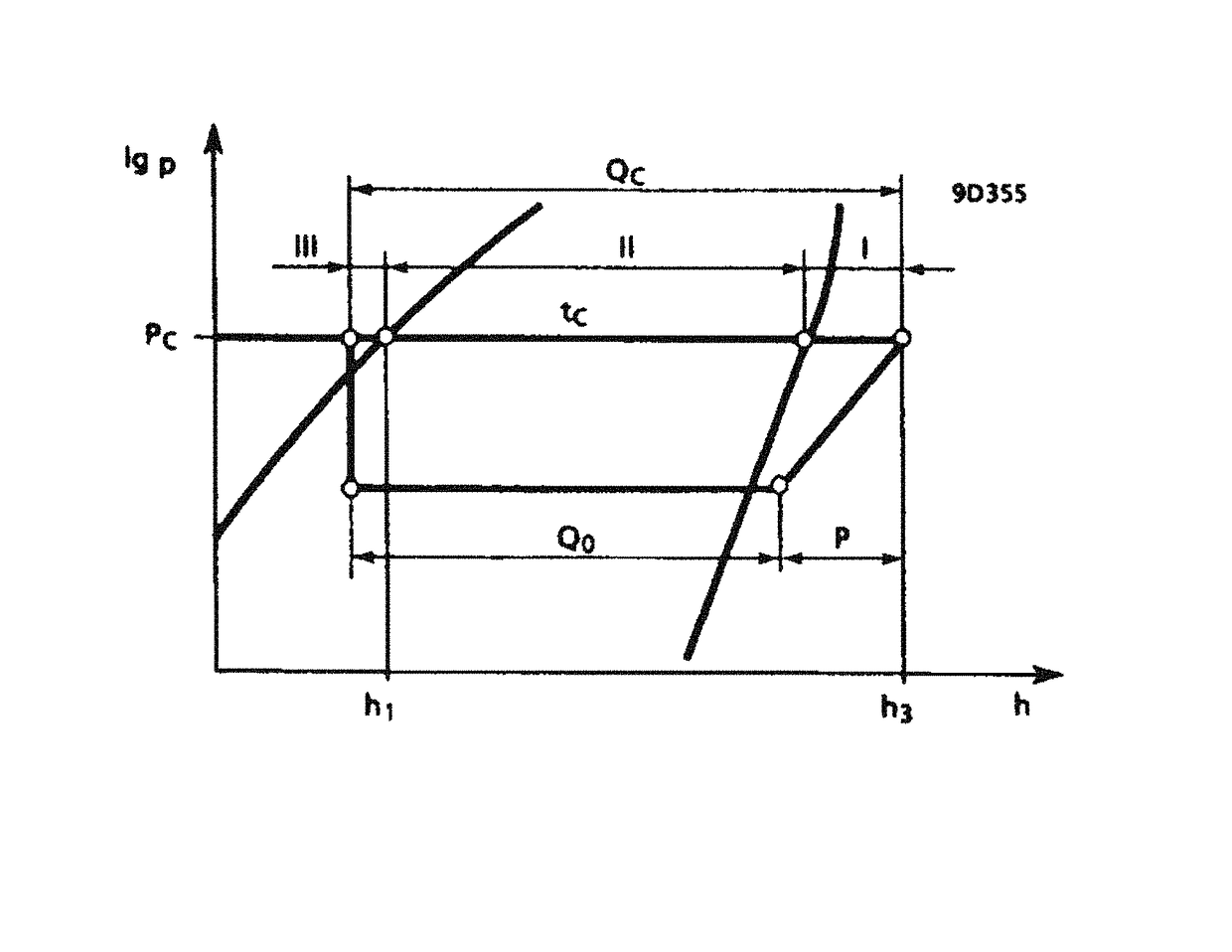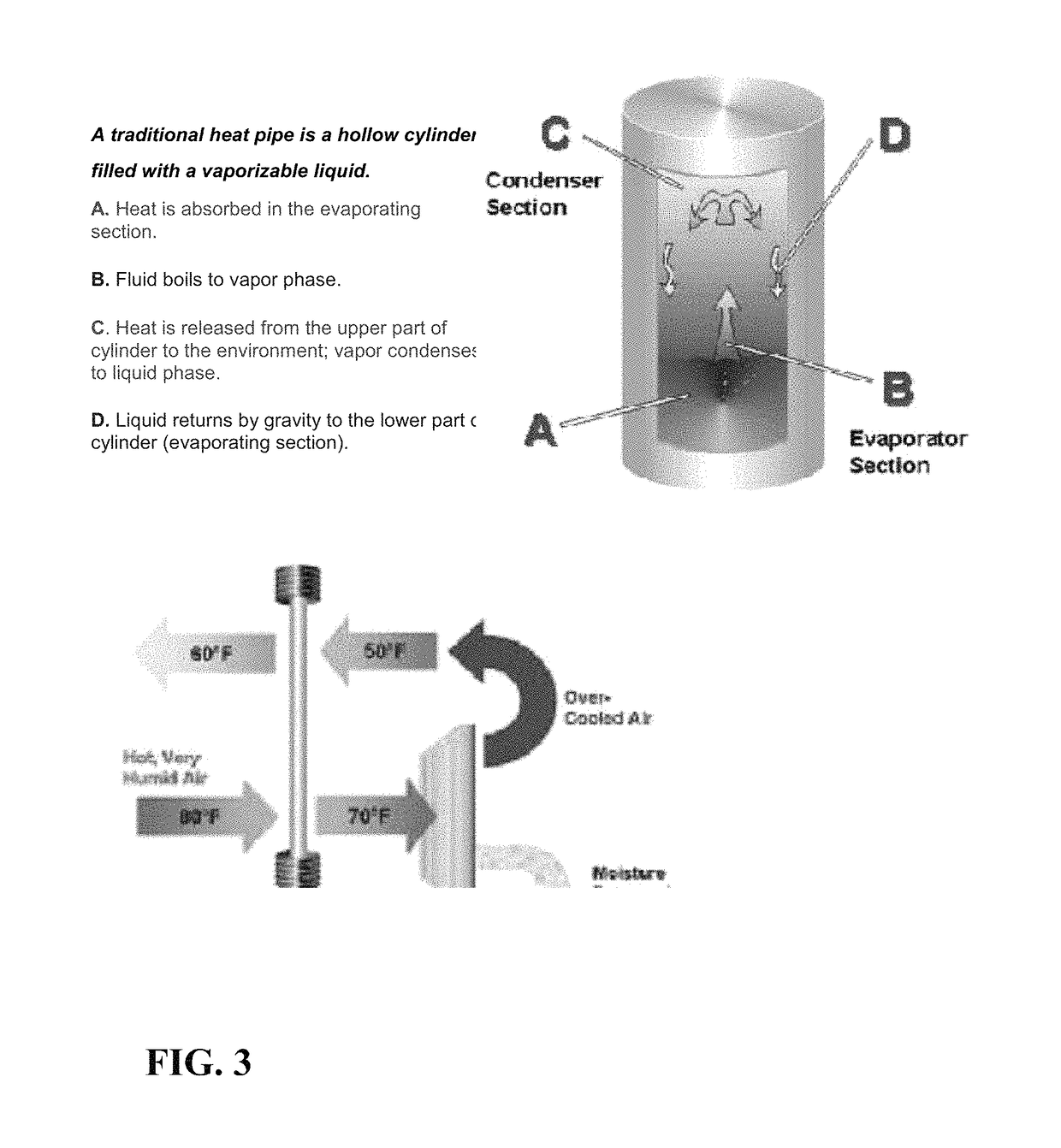Waste heat recovery and optimized systems performance
a technology of waste heat and system performance, applied in the field of waste heat recovery, can solve the problems of waste heat simply becoming waste heat, cooling generates considerable quantities of heat, etc., and achieves the effect of reducing energy consumption
- Summary
- Abstract
- Description
- Claims
- Application Information
AI Technical Summary
Benefits of technology
Problems solved by technology
Method used
Image
Examples
Embodiment Construction
[0039]The invention relates to improving the efficiency of waste heat recovery of large scale refrigeration and air conditioning systems. This also can be applied to other industrial systems in different applications that use heat rejected in the process. The heat rejected in any process to a coolant is mainly can be considered waste heat unless it is recovered from a heat pipe condenser or heat pipe heat exchanger or used in other process or saved any form of energy. In the refrigeration system with hot gas diversion of FIG. 6
Heat Supply of the Condenser:
[0040]The heat absorbed in the evaporator Qe and the compressor P in the form of heat must be released again in the heat pipe condenser. Instead of dissipating this heat quantity Qc to the environment, appropriate measures can be implemented in order to put the heat flow to meaningful use for heating purposes because of the temperature level. The condenser's output Qc depends mainly on the refrigerant volume V circulated per unit t...
PUM
 Login to View More
Login to View More Abstract
Description
Claims
Application Information
 Login to View More
Login to View More - R&D
- Intellectual Property
- Life Sciences
- Materials
- Tech Scout
- Unparalleled Data Quality
- Higher Quality Content
- 60% Fewer Hallucinations
Browse by: Latest US Patents, China's latest patents, Technical Efficacy Thesaurus, Application Domain, Technology Topic, Popular Technical Reports.
© 2025 PatSnap. All rights reserved.Legal|Privacy policy|Modern Slavery Act Transparency Statement|Sitemap|About US| Contact US: help@patsnap.com



